Extending Home Networks - A Comparison of G.hn, HomePlug AV2 and Wi-Fi Mesh
by Ganesh T S on December 7, 2016 8:00 AM ESTPLC Performance: ARRIS SBX-1000P (G.hn) vs. D-Link DHP-P701AV (HomePlug AV2)
The ARRIS SBX-1000P is a wired network extender based on G.hn technology. It is meant to be used in conjunction with a RipCurrent router such as the SBR-AC1900P. The aspect that differentiates the SBR-AC1900P from other AC1900 routers is the integration of a G.hn PLC chipset inside the router itself. Otherwise the design is a standard Broadcom-based AC1900 router (Broadcom BCM4709A as the SoC and the Broadcom BCM4360 for the 3x3:3 an+ac / bgn 5 GHz and 2.4 GHz radios). The G.hn PLC chipset is from Marvell - the 88LX3142 for the digital baseband and the 88LX2718 for the analog front end.
The SBX-1000P is a simple PLC node with a single Ethernet port. It uses the same Marvell platform as the G.hn segment of the SBR-AC1900P. Similar to the Comtrend PG-9172 that we reviewed earlier, it comes with MIMO support and G.hn / HPAV co-existence technology.
The D-Link DHP-P701AV is an AV2 2000-class HomePlug AV2-compliant PLC kit. It uses the Broadcom BCM60500 chipset. It earns the AV2 2000 designation, thanks to its MIMO capabilities and the use of the full possible spectrum allowed by HomePlug AV2 - 2 to 86 MHz.
Note that this kit is meant to be used in conjunction with a regular router. There are products such as the Nighthawk DST in the market that combine the router and PLC chipset in a single unit (like the ARRIS kit we just discussed above). However, the Nighthawk DST uses a cheaper SISO version of the Broadcom chipset that is only AV750-class.
In any case, we are going to compared wired backhaul over power lines using the best possible products that G.hn and HomePlug AV2 currently have in the market. The graphs below shows the TCP and UDP downlink and uplink speeds across the six different locations in our test setup.
In almost all cases (except for a few UDP ones), the HomePlug AV2 2000-class D-Link DHP-P701AV delivers better throughput. This is in contrast to the previous review of the Comtrend PG-9172, where the G.hn kit could hold its own against the AV2 1200 products. The upcoming generation of G.hn chipsets promises better performance - it remains to be seen if that makes G.hn achieve performance parity with HomePlug AV2 in our particular test setup.


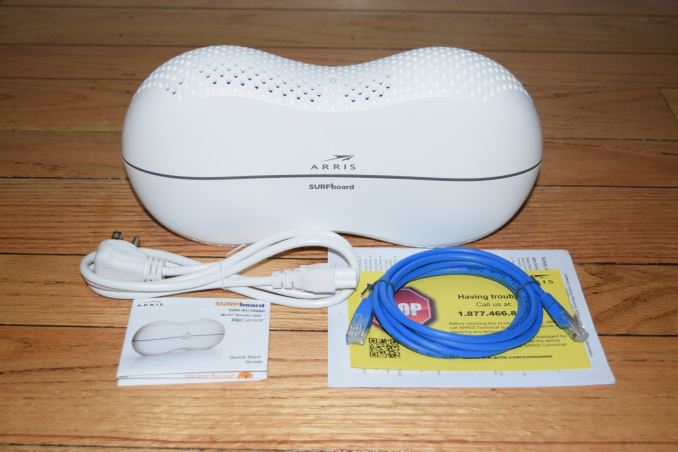

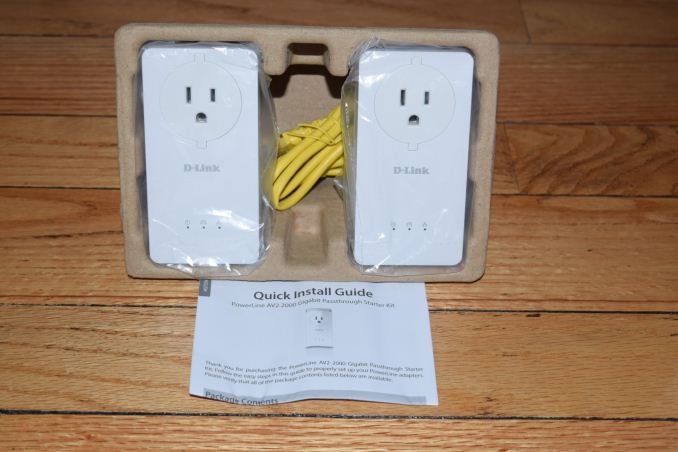
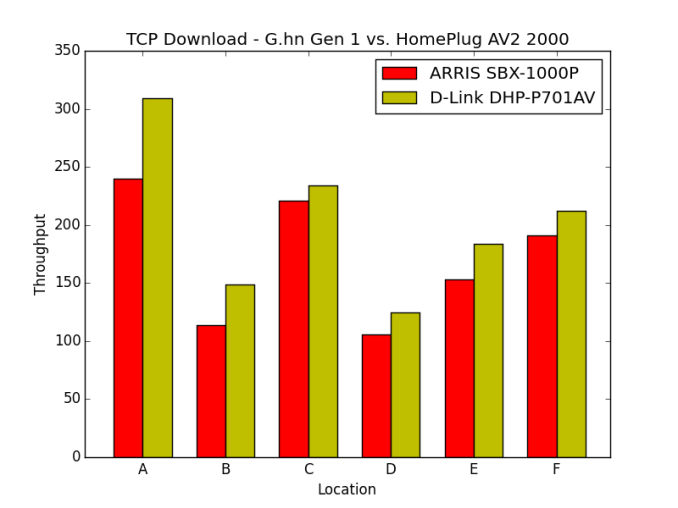
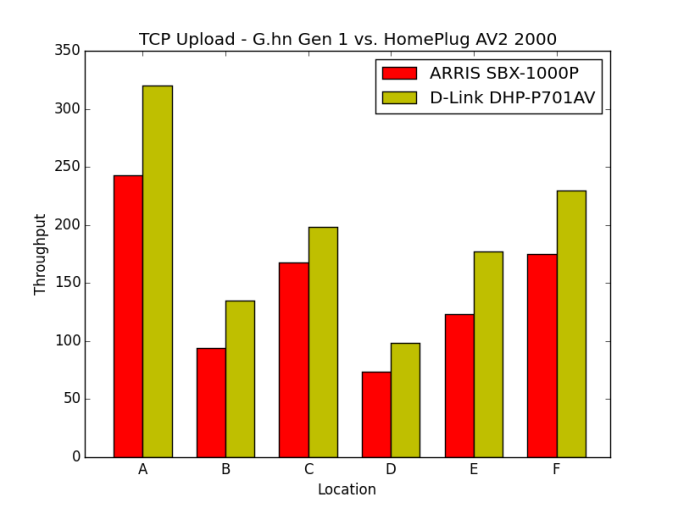
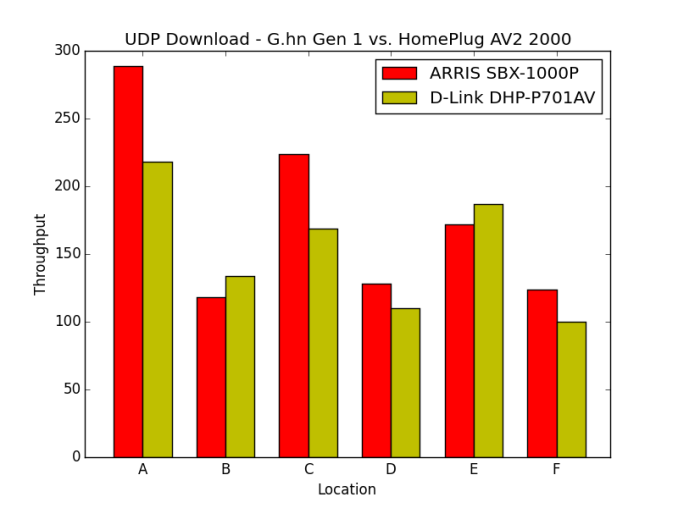
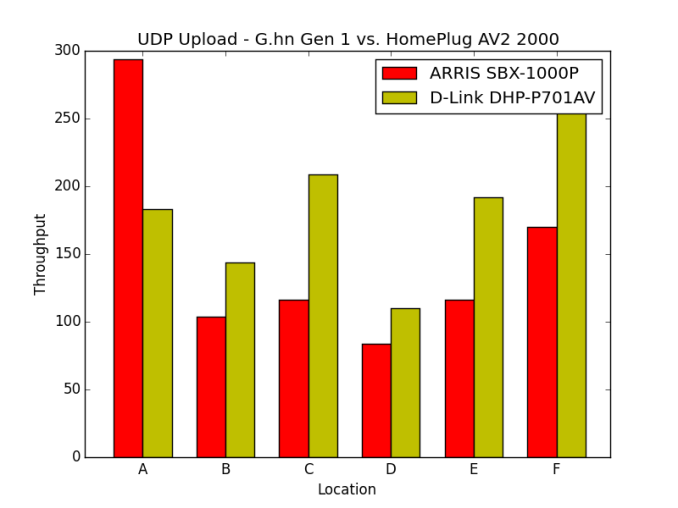








56 Comments
View All Comments
jardows2 - Wednesday, December 7, 2016 - link
Interesting comparison. Looks like you get flexibility or performance, but not both. It looks like the G.hn performance is what is hurting the ARRIS products, so it will be interesting to see what the next generation can do.For me personally, I've done the best suggestion, and just ran Ethernet throughout my house!
nathanddrews - Wednesday, December 7, 2016 - link
I'm with you there, hard wired and ready for 10GbE (should it ever be cost effective). Still, sometimes plans change ("The TV looks better over... there!") and that's where I really like powerline-based networking.Did I miss the tests measuring latency and/or packet size? Seems to me that the major issue with all non-ethernet networks comes down to that.
chaos215bar2 - Wednesday, December 7, 2016 - link
What, you didn't already run Cat 6 "over there"? For shame!Seriously, though. If you go through the time and expense of wiring a home with ethernet, do get the highest quality cable you can reasonably predict will be useful in the future, and do run more drops than you ever imagine you'll need or can practically wire up at your network hub. You don't need to use them all on day one, but you'll be really glad they're there when you decide the TV just really needs to be on that other wall.
nathanddrews - Thursday, December 8, 2016 - link
Haha, true. I try to get at least two ethernet jack on every wall. There's just always something that gets missed. To me, the single best application of powerline networking is home automation, but almost none of the best toys use it (Hue, Nest, etc.)adriangb - Sunday, December 18, 2016 - link
The problem I've always had with Powerline is the homes wiring: in old homes, or homes that have been extended, sometimes it won't connect at all or it will have pretty bad speeds, and you can't know until you try it reallyjamyryals - Wednesday, December 7, 2016 - link
I have Cat6 and several access points around my house, and the connectivity is great. The problem my family runs into is their devices will often stick to a weak signal instead of hopping over to an access point with a stronger signal. Can anyone recommend a mesh networking solution (single SSID) with a wired backhaul?asendra - Wednesday, December 7, 2016 - link
You shouldn't need to move to a mesh system to get that functionality. "Enterprise" class APs like ubiquiti AC line offer zero-handoff roaming.Thats the setup I have. Ethernet to every room, and in a couple of strategically selected rooms I have two Ubiquity AC APs installed.
I find mesh systems a good and easy solution for "normals" needing big wifi coverage, but I you have ethernet, I prefer my solution, it find it more optimal.
jamyryals - Wednesday, December 7, 2016 - link
Sounds like just what I need, I'll look into it thank you.sl0wcheetah - Wednesday, December 7, 2016 - link
Agree. I wasted money on 2 "good" APs (one was a router used as AP) before going with Ubiquiti.It works great.
Ratman6161 - Wednesday, December 7, 2016 - link
Yes but anything with the word "enterprise" in it usually means you are going to pay more. What if I want "cheap but good" :)?